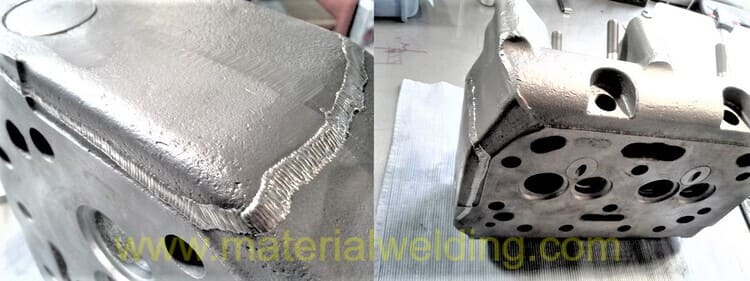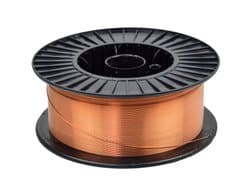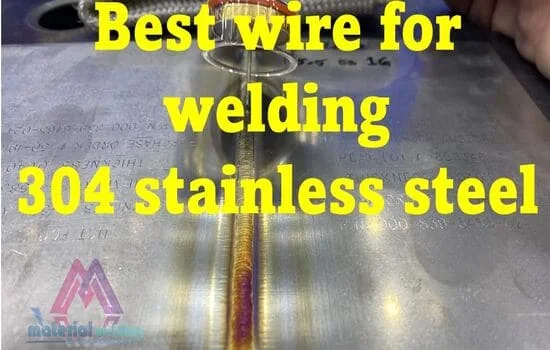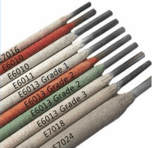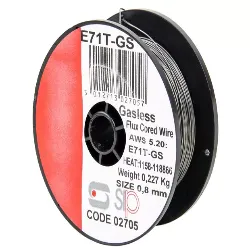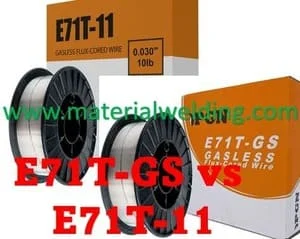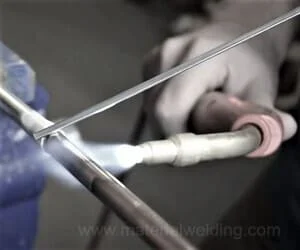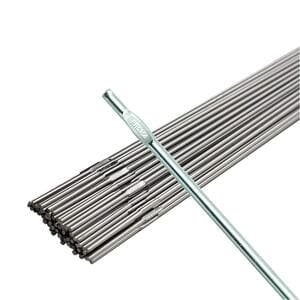ER70S-3 welding wire
ER70S-3is a type of welding wire that is commonly used for welding mild and low alloy steel.
It is a solid wire that is typically coated with very thin copper layer, which helps to protect the welding wire from rusting and other forms of contamination as well as provides good electrical conductivity when it passes through welding torch tip.
The wire is usually made from a mixture of metals such as carbon steel, manganese, silicon, and other alloys. ER70S-3 is known for its excellent welding characteristics such as smooth arc transfer, and low spatter.
What does ER70S-3 mean?
ER70S-3stands for “Electrode for Mild Steel with low levels of Deoxidizers (Silicon+ Manganese)”. The number on ER70S-3welding wire means:
- “ER” stands for electrode, which is the type of welding wire used.
- “70” represents the minimum tensile strength of the welded metal in thousands of pounds per square inch (psi or 10x in Ksi).
- “S” stands for solid wire, as opposed to a flux-cored wire.
- “3” is the indication of the level of deoxidizers and silicon in the wire, typically a lower level of silicon in the wire composition.
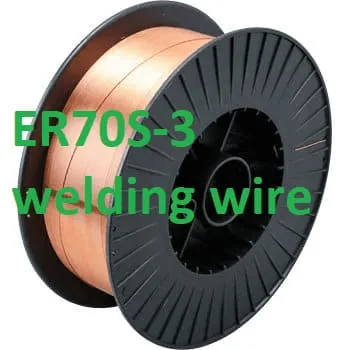
ER70S-3 Welding Wire Specification
ER70S-3is a type of welding wire that is specified by the American Welding Society (AWS) in the AWS A5.18/A5.18M:2017 standard.
According to this standard, the wire must meet the following specifications:
- Chemical Composition: The wire must contain a minimum of 0.06-0.15% of carbon, 0.90-1.40% of manganese, 0.45-0.75% of silicon, and other alloying elements.
- Tensile Strength: The wire must have a minimum tensile strength of 70,000 psi (490 MPa).
- Yield Strength: The wire must have a minimum yield strength of 508,000 psi (400 MPa)
- Elongation: The wire must have a minimum elongation of 22%.
- Impact Test: The wire must pass an impact test at -20°C (-0°F) with a minimum absorbed energy of 27 J (20 ft-lb).
In addition to these mechanical properties, the wire must also meet certain requirements for its dimensional characteristics, such as diameter and spool size, as well as for its packaging and labeling.
ER70S-3is a versatile wire that is used for welding mild and low alloy steels, it is well known for its good tolerance to rust and scale, good wetting action and low spatter.
ER70S-3 Welding Wire Chemical Compositions
Here is a table of the typical chemical composition of ER70S-3 welding wire according to the AWS A5.18/A5.18M:2017 Specification:
| Element | Minimum (%) | Maximum (%) |
| Carbon | 0.06 | 0.15 |
| Manganese | 0.90 | 1.40 |
| Silicon | 0.75 | 1.50 |
| Sulfur | 0.00 | 0.035 |
| Phosphorus | 0.0 | 0.025 |
| Copper | 0.00 | 0.50 |
| Nickel | 0.00 | 0.15 |
| Chromium | 0.00 | 0.15 |
| Molybdenum | 0.00 | 0.15 |
| Vanadium | 0.00 | 0.03 |
It’s important to note that this table represents typical chemical composition based on the standard and actual compositions may vary depending on the manufacturer.
It’s always recommended to check the manufacturer’s data sheet for actual composition of the wire before using it.
ER70S-3 Welding Wire Mechanical Properties
Here is a table of the typical mechanical properties of ER70S-3 welding wire according to the AWS A5.18/A5.18M:2017 standard:
| Property | Minimum Value |
| Tensile Strength (psi) | 70,000 (70 Ksi or 490 MPa) |
| Yield Strength (psi) | 58,000 (58 Ksi or 400 MPa) minimum |
| Elongation (%) | 22 minimum |
| Impact Test (ft-lb) | 27 J at -20°C (20 ft·lbf @ 0°F) |
ER70S-3 vs ER70S-6 MIG silicon comparison
ER70S-3 and ER70S-6 are both types of MIG welding wires used for welding mild and low alloy steels, but they have some key differences in their chemical composition.
Read more: ER70S-3 vs ER70S-6
ER70S-3 is a general-purpose wire that contains lower levels of silicon, typically between 0.45% – 0.75%.
ER70S-6, on the other hand, contains higher levels of silicon, typically between 0.80% – 1.15%. Instead, it has higher levels of deoxidizers, such as silicon & manganese, which helps to reduce porosity in the weld and improve its overall strength.
This wire is also known for producing less spatter than ER70S-3 which might be an advantage in some welding situations where spatter is a concern.
ER70S-3 shielding gas
ER70S-3 welding wire is typically used with a shielding gas such as argon, carbon dioxide (CO2), or a mixture of the two.
Argon is a pure, inert gas that is and not commonly used as a shielding gas for welding mild and low alloy steels.
It provides excellent arc stability and a very smooth arc transfer, which helps to reduce spatter and improve the overall quality of the weld. Argon is also more expensive than CO2 and it’s less readily available.
Carbon dioxide (CO2) is a commonly used shielding gas for welding mild and low alloy steels. It is less expensive than argon and more readily available.
CO2 is a reactive gas that helps to increase the heat input to the weld, which can be beneficial for welding thicker materials. However, it can also increase the amount of spatter and may lead to a less stable arc.
Mixed gases such as 75% Argon – 25% CO2 (C25) is a commonly used shielding gas for welding mild and low alloy steels. It offers a balance between the good arc stability and smooth arc transfer of argon, and the higher heat input of CO2. It is also more affordable than pure argon and offers more consistent welds.
It’s important to consult the manufacturer’s recommendation as well as the welding code or standard that applies to the specific application before choosing the shielding gas, as the choice of shielding gas can affect the mechanical properties of the weld.
ER70S-3 Welding wire Polarity
ER70S-3 welding wire is typically used with direct current electrode positive (DCEP) polarity, also known as reverse polarity (RP) in MIG Welding.
This type of polarity is used when the electrode is consumable, like the ER70S-3 welding wire, and it’s the most common type of polarity used for GMAW (MIG) welding.
TIG welding using ER70S-3 is carried out with DCEN Polarity (Electrode negative or also called straight polarity).
In the ER70S-3what does the s tell the operator about the wire?
A solid wire is a single, solid piece of metal that is used for welding.
